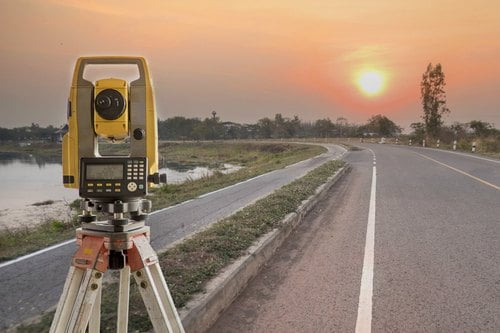Table of Contents
In this article, we will discuss a reconnaissance survey for route surveying.
1. Introduction
A reconnaissance survey is a rapid but thorough examination of an area or a strip of territory between the termini of the project to determine which of the several possible routes may be worthy of a detailed survey.
The reconnaissance survey is the most important of the series of surveys mentioned above. A considerable amount of time and expense may be saved on unusable instrument surveys if the most desirable line is obtained during the reconnaissance. A very thorough and exhaustive examination of the whole area should be made to ensure that no possible route has been overlooked. Each route may be studied, and all but the most desirable eliminated.

The work of the reconnaissance survey must be entrusted to a very experienced engineer. The locating engineer should be endowed with a rare combination of technical thoroughness, business, judgment, and visionary foresight, to enable hiM to select a route that will satisfy the future demand, in so far as this may be economically justified.
One of the first steps on reconnaissance is to assemble and study all the availabi maps of the territory to be covered, such as the Survey of India maps. If the available maps prove inadequate, aerial observation and photographs of the area or the several routes and considerations may be traversed on foot, horseback, automobile, or any other locally available conveyance.
2. Reconnaissance Instruments
Distances are usually taken from the reference maps, or they may be checked roughly by pacing or pedometer if the reconnaissance is made on foot. The directions of lines may be observed by means of a prismatic compass. In rough terrain or heavily wooded areas, some form of compass. is indispensable to field reconnaissance.
The relative elevations of points may be determined directly from the topographic map, if available. Whenever such maps are not available, an aneroid barometer may be used to determine elevations. Recent improvements of the aneroid have furnished engineers with an instrument capable of measuring differences of elevations to an accuracy of from to l m.
The relative slope of the ground or approximate difference in elevation may be obtained by the use of a level or a clinometer. The notes and records may be marked directly on an existing map, or notes may be kept separately in a narrative form. The reconnaissance map sketched on an existing map or made separately should show the several routes that are practicable, the controlling points, important topographic features, and all other details that may possibly be helpful in the selection of the route.
| Read More: Neo Concrete |
3. General information
The map is supplemented by reconnaissance notes which may contain the following :
(1) The general topography of the country or the character of the terrain between termini or major controlling points, as it is apt to impress to a characteristic pattern upon a route location, particularly in the case of a highway or a railroad. Terrain may be generally classified as level, rolling or mountainous.
(2) Possible ruling gradients.
(3) Stream crossings, which require a careful study of the rate of flow, high-water elevation, flood conditions, the character of banks, and the width of the stream. A suggested type of structure with the most desirable points of crossing should be noted on the map.
(4) Information about a railroad or other highway crossings.
(5) Obligatory points, such as intermediate towns, markets, or production centers. Bypass locations should be indicated in the notes for all small towns and cities for the more important routes. Provisions should also be considered for connections of the route of these centers of population.
(6) Geological characteristics of the area affecting foundations for bridges etc. and stability of the line should be observed and noted. The presence of rock outcrops, swamps, varying soil types and dangerous possibilities of landslides is very important.
(7) Availability of building materials and labor, and sites of quarries, etc. nearby the proposed route.
(8) Value of the land to be acquired.
| Read More: Surge Tanks |
4. Selection of Route
From the reconnaissance survey and detailed notes collected, only one or two routes are selected, deserving further detailed study. The recent development in the art of preparing topographic maps from aerial photographs has served as an invaluable aid in the selection of routes. The use of aerial maps for route selection does not obviate the need for ground surveys, but the expense of time-consuming reconnaissance and preliminary surveys may be reduced to a minimum by the use of modern methods.
A route may have three locations :
(i) valley location,
(ii) cross-country location, and
(iii) ridgeline location.
In the case of valley location, the route follows the valleys and the drainage lines of an area and has few excessive grades. There is often the danger of washouts and floods. A number of bridges may be required to cross the tributary streams. The reconnaissance of the route should include the entire valley since it often happens that a more advantageous location is achieved by crossing the valley at strategic points. In the case of cross-country location, the line is located in opposition to the drainage. Such a line crosses the ridges very often and will have a steep grade.
The construction costs along such a line may also be excessive. The location along ridges are relatively free of drainage problems and major drainage structure. However, since ridges are seldom straight, considerable curvature may have to be employed in such a location. Also, steep grades are encountered when the location drops into valleys or when the ridge is regained.

